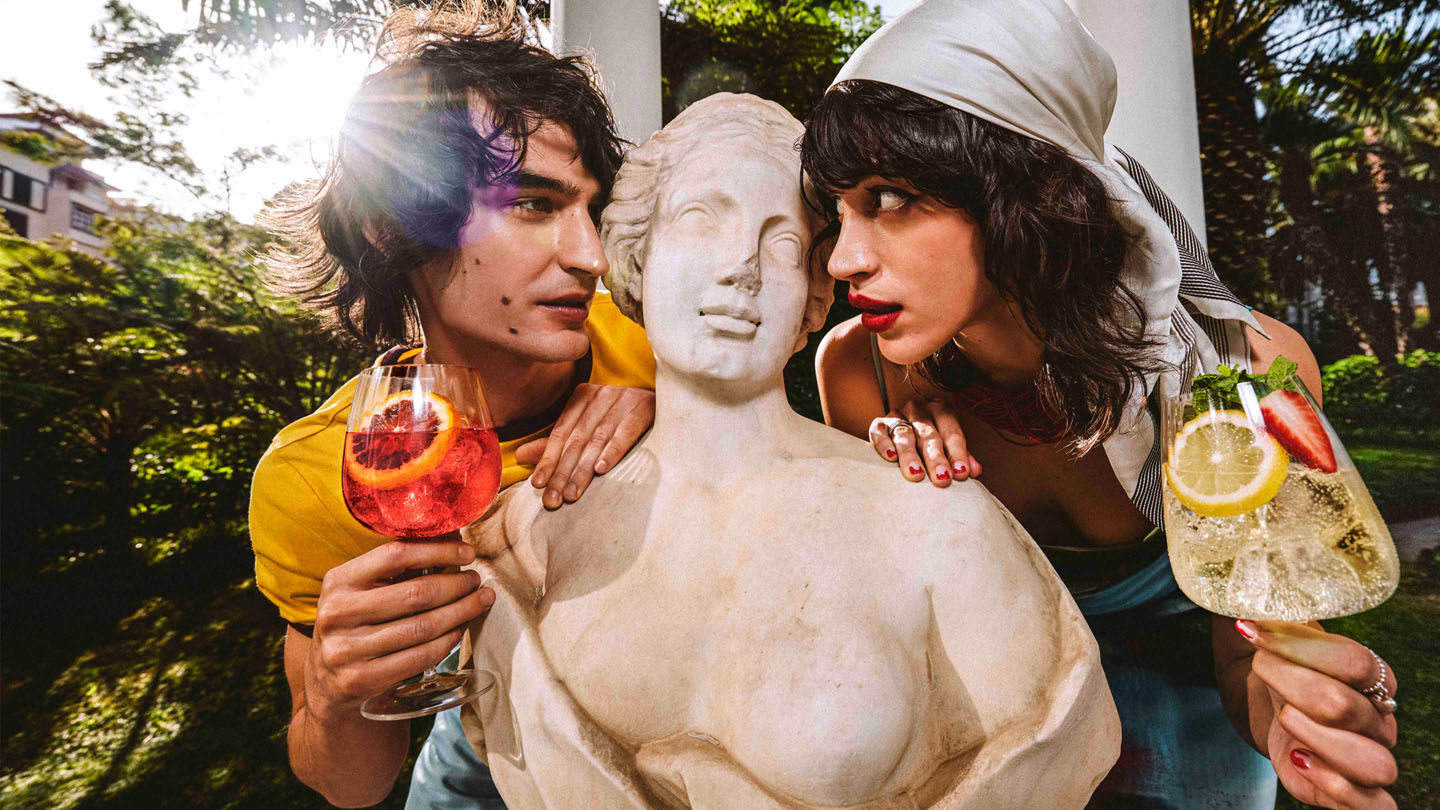A Guide to Vermouth
Vermouth is a fortified wine, infused with artfully selected botanicals, herbs and spices for a complex and vibrant flavour profile. Each type of vermouth has been curated for a specific taste, ranging from floral and herbal notes to subtle sweetness. This versatility makes vermouth a perfect ingredient for classics like the Martini cocktail or a Negroni.
In Italy, where vermouth was born and continues to thrive, it’s customary to enjoy the drink during aperitivo – a social pre-dinner ritual celebrated with drinks, light snacks, and time to unwind with friends and family. So, whether you’re sipping vermouth neat or mixing it in a refreshing cocktail, join us as we explore all things vermouth.
What is Vermouth?
Vermouth has two distinct forms; a ‘dry’ vermouth, characterised by its pale appearance and bitter notes, and a red, ‘sweet’ vermouth with a richer, sweeter flavour. The latter was invented in Turin around 1780. The drink was originally named ‘Wermut’, after the German word for ‘wormwood’, but the French pronunciation ‘vermouth’ quickly caught on and became the name we still associate with this creation today. Joseph Noilly, between 1800-1813, created the first dry vermouth in France, reducing the amount of sugar content and experimenting with botanicals to create the paler, tart vermouth we feature in our gin Martini cocktails.
Though sweet vermouths are classically considered to be red, and pale vermouths dry, this is not always the case.
During the late 18th Century, vermouth became synonymous with the aperitivo spirit of socialising, relaxing and warmth. With this rising popularity as an aperitivo, mixologists began experimenting with the drink and by the end of the 19th Century, cocktails like the Manhattan, Martini cocktail, and Negroni were created and enjoyed world-wide, and still are today.
How is Vermouth made?
Recipes for making great vermouth have been passed down from master to master. In the case of MARTINI, the art of blending is a skill trusted to a select few to continue the legacy of the original Master Blender, Luigi Rossi. You can read more about MARTINI’s ingredients, Master Blender, Giuseppe Musso, and our Master Herbalist Alessandro Garneri, MARTINI Heritage page.
The first stage to making vermouth is to prepare the wines that are the skeleton of the product. In its vermouths, MARTINI uses light, fresh, crispy wines that we name “vino fiore.” These wines are selected and blended by the master to obtain a consistent base during the years. The second step is the preparation of the botanical extracts. The botanicals used to make MARTINI are carefully selected all around the world by out master herbalist that prepare the secret recipes, specific for each expression of MARTINI. The dried botanicals are then infused in alcohol and water and alcohol to obtain the unique elixirs that provide the “soul” of each MARTINI. At the blending stage all the ingredients are added: the sugar is dissolved into the wine, the extracts are added, the blend is fortified and finally, when required, the caramel provide the color.
Vermouth is the product of a complex layering of ingredients, and every combination of roots, herbs, flowers, grapes, spices, and spirits marries to create a unique tasting drink. Every detail, from where the ingredients are sourced, to the infusion time of each botanical, can impact the final taste of the product, so every choice is deliberate to create a perfectly balanced vermouth.
Dry Vermouth
Dry vermouth is characterized by a low level of sugar, below 5% (or below 3% if ExtraDry). Extra Dry is the most popular component to the Martini cocktail due to its elegant appearance and classic mix of bitter, floral and herbal notes.
Sweet Vermouth
The most known sweet vermouth is Rosso, characterized by a high level of sugar and by a classic bittersweet herbal flavour. Its color is due to the addition of caramel.
It can be mixed perfectly in several classic cocktails like with whiskey in the famous Manhattan.
Sweet vermouth can also be made without adding caramel, so with a pale yellow color and named Bianco. This vermouth has floral a vanilla notes and a lighter bitterness.
How you should store Vermouth
Once opened, it’s crucial to store your vermouth in the fridge. Not to be confused with white and red wine, all vermouth, whether it’s sweet or dry, should be refrigerated.
When stored in the refrigerator, vermouth will keep well for around a month. Beyond that, the quality can will decline as it oxidises. When you first open a bottle of vermouth, have a taste, and note how vibrant and complex the flavour profile is. As it ages, and especially when it goes bad, this brightness and complexity will fade. Old, or incorrectly stored, vermouth becomes flat, dull and will have a bad aroma.
Ways to enjoy Vermouth
Vermouth can be enjoyed in various ways, depending on your mood and what you like to drink. For a simple cocktail bursting with complex flavour, enjoy your vermouth over ice as an aperitivo, or in a longer drink such as a spritz. Garnish with a wheel of lemon, orange or grapefruit to complement the base botanicals of the vermouth.
Classic cocktails like the Negroni, Manhattan, Martini cocktail and Americano, all use vermouth for their taste and complexity. Our non-alcoholic vermouths, like Floreale or Vibrante, are perfect for when you want something flavourful to drink without the alcoholic strength of a spirit.


